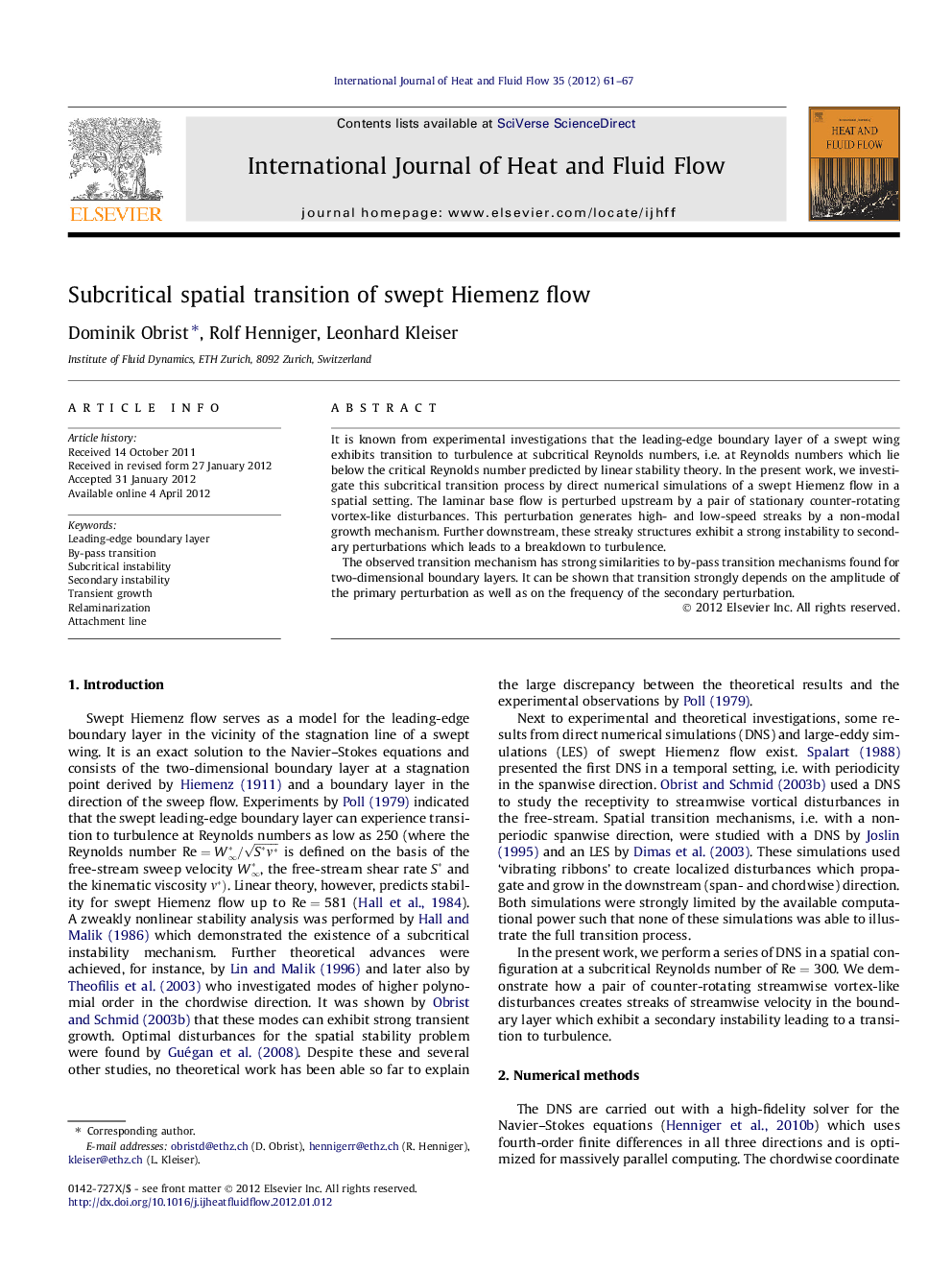| Article ID | Journal | Published Year | Pages | File Type |
|---|---|---|---|---|
| 655574 | International Journal of Heat and Fluid Flow | 2012 | 7 Pages |
It is known from experimental investigations that the leading-edge boundary layer of a swept wing exhibits transition to turbulence at subcritical Reynolds numbers, i.e. at Reynolds numbers which lie below the critical Reynolds number predicted by linear stability theory. In the present work, we investigate this subcritical transition process by direct numerical simulations of a swept Hiemenz flow in a spatial setting. The laminar base flow is perturbed upstream by a pair of stationary counter-rotating vortex-like disturbances. This perturbation generates high- and low-speed streaks by a non-modal growth mechanism. Further downstream, these streaky structures exhibit a strong instability to secondary perturbations which leads to a breakdown to turbulence.The observed transition mechanism has strong similarities to by-pass transition mechanisms found for two-dimensional boundary layers. It can be shown that transition strongly depends on the amplitude of the primary perturbation as well as on the frequency of the secondary perturbation.
► We present direct numerical simulations of transition in a swept Hiemenz flow. ► The Reynolds number is set to the subcritical value of 300. ► The laminar base flow is perturbed with a pair of streamwise vortices. ► The transition mechanism involves transient growth and streak breakdown. ► For some configurations, we observe relaminarization on the attachment line.
